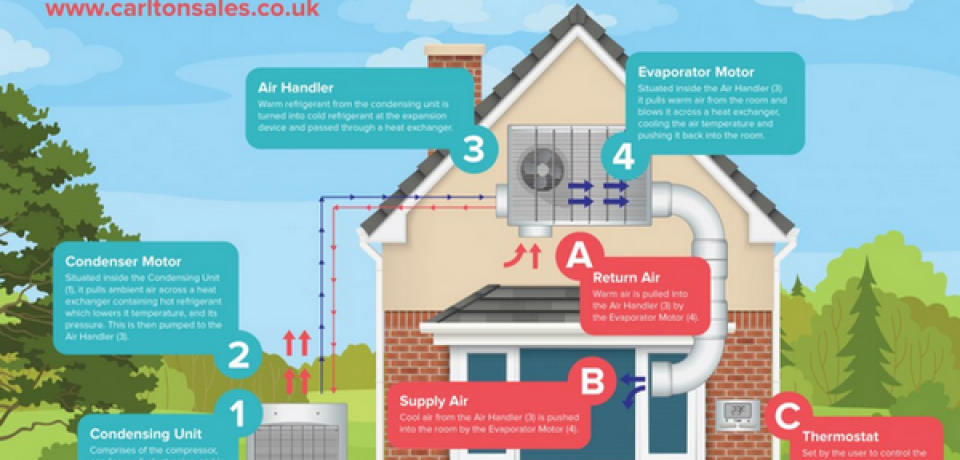The Future Of Home Heating - How Heat Pump Technology Is Progressing
The Future Of Home Heating - How Heat Pump Technology Is Progressing
Blog Article
Authored By-Marshall Goff
Heatpump will certainly be an important technology for decarbonising heating. In a situation consistent with federal governments' revealed energy and climate commitments, their international ability increases by 2030, while their share in home heating rises to one-quarter.
They function best in well-insulated homes and rely on power, which can be provided from a sustainable power grid. Technical innovations are making them more effective, smarter and cheaper.
Fuel Cells
Heat pumps make use of a compressor, cooling agent, coils and fans to move the air and warmth in homes and home appliances. They can be powered by solar energy or power from the grid. They have actually been getting popularity because of their affordable, quiet operation and the capacity to produce electrical energy during peak power demand.
Some companies, like IdaTech and BG MicroGen, are dealing with gas cells for home heating. These microgenerators can replace a gas central heating boiler and create several of a residence's electric demands with a link to the electrical energy grid for the rest.
However there are reasons to be doubtful of using hydrogen for home heating, Rosenow claims. It would certainly be expensive and ineffective compared to other technologies, and it would include in carbon discharges.
Smart and Connected Technologies
Smart home innovation enables home owners to link and manage their tools remotely with making use of smart device applications. As an example, clever thermostats can learn your home heating preferences and automatically adapt to enhance power intake. Smart lighting systems can be managed with voice commands and instantly shut off lights when you leave the room, lowering power waste. And clever plugs can monitor and handle your electrical use, enabling you to identify and restrict energy-hungry home appliances.
The tech-savvy house depicted in Carina's interview is a good picture of just how residents reconfigure area heating practices in the light of brand-new wise home innovations. They depend on the gadgets' automated attributes to accomplish everyday modifications and concern them as a convenient ways of conducting their home heating methods. Therefore, they see no factor to adapt their methods better in order to allow adaptability in their home energy demand, and interventions targeting at doing so might deal with resistance from these homes.
Electrical power
Because heating up homes accounts for 13% people exhausts, a switch to cleaner choices could make a large distinction. But the innovation encounters obstacles: It's costly and requires extensive home remodellings. And it's not always compatible with renewable energy resources, such as solar and wind.
Until just recently, https://www.wral.com/energy-savings-7-energy-efficient-tips-for-saving-money-on-your-summer-electric-bill/20359948/ were too expensive to take on gas designs in the majority of markets. However new innovations in style and products are making them more budget friendly. And better cold environment performance is enabling them to function well even in subzero temperatures.
The following action in decarbonising home heating might be using heat networks, which draw heat from a main source, such as a close-by river or sea inlet, and disperse it to a network of homes or buildings. That would reduce carbon emissions and allow households to benefit from renewable resource, such as environment-friendly electrical energy from a grid supplied by renewables. This option would certainly be less expensive than changing to hydrogen, a nonrenewable fuel source that needs brand-new framework and would just reduce CO2 discharges by 5 percent if paired with improved home insulation.
Renewable Energy
As electrical power prices go down, we're beginning to see the very same fad in home heating that has driven electrical cars right into the mainstream-- yet at an even faster rate. The solid environment instance for electrifying homes has actually been pushed further by brand-new research study.
Renewables make up a substantial share of contemporary warmth consumption, yet have actually been offered limited plan attention globally contrasted to various other end-use sectors-- and even much less interest than power has. Partly, this shows a mix of consumer inertia, split motivations and, in many nations, aids for fossil fuels.
New modern technologies could make the shift easier. For instance, heatpump can be made a lot more energy effective by changing old R-22 cooling agents with new ones that don't have the high GWPs of their precursors. Some specialists also envision area systems that draw heat from a neighboring river or sea inlet, like a Norwegian fjord. The cozy water can then be made use of for heating and cooling in a neighborhood.